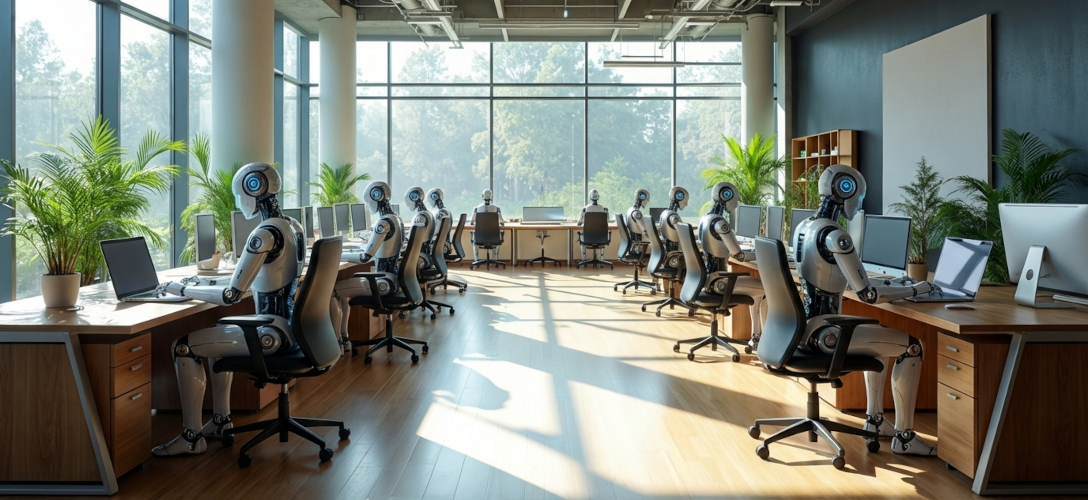
AI Agent: Autonomous Magic vs. Engineered Workflows

AI Agent: Autonomous Magic vs. Engineered Workflows
Introduction: The Allure of the Autonomous Agent
You’ve seen the headlines. You’ve watched the demos. The promise is intoxicating: a new class of AI, an “agent,” that you can hand a complex, multi-step task with little more than a five-word prompt. It independently devises a plan, navigates the web, makes judgments, and delivers a flawless, finished result. It’s the dream of a digital employee that not only executes but thinks.
For any established business leader looking to integrate AI, this narrative is incredibly compelling. It suggests a future where complex operational problems can be solved without the deep, often tedious, work of process analysis, data structuring, or technical overhead. It whispers a seductive solution: automate first, think later.
But for companies seeking reliable, scalable, and financially sound AI integration, this vision is not just premature, it can be a dangerous misallocation of time, budget, and strategic focus. The truth, born from our experience with the technology, is that sustainable AI success isn’t found in autonomy; it’s built on architecture.
The gap between the user’s expectation of effortless automation and the current reality of AI technology is where projects stall and ROI vanishes. This article cuts through the hype to expose that reality and provides the clear, actionable framework you need to deploy AI agents that deliver consistent value, not just viral moments.
The Two Extremes of AI Agents: A Realistic Breakdown
The conversation around AI agents is often presented as a binary choice: either you have a human doing a task, or a fully autonomous AI does it without supervision. This is a false dichotomy that obscures the real, more nuanced decision businesses must make. At System in Motion, we analyze the landscape through a pragmatic lens, categorizing the technology into two distinct approaches, each defined by a critical trade-off between flexibility and stability.
A. The Autonomous Agent (The “Magician”)
This is the archetype that captures the imagination. Systems like Manus, Genspark, Operators, or Anygen operate on a principle of high independence. You provide a high-level goal “Conduct a market analysis of our top three competitors in Europe and prepare a SWOT presentation” and the agent works to achieve it. It will:
- Self-prompt, creating its own sub-tasks and to-do lists.
- Make decisions on the fly about which tools to use and what information to prioritize.
- Improvise its approach, adapting to challenges it encounters.
The Allure: The potential is undeniable. For exploration, brainstorming, and tackling novel, one-off problems with no predefined solution path, their adaptability is powerful. They require minimal upfront design, acting as a force multiplier for creativity.
The Fatal Flaw: Instability. This “magic” comes at a cost. Because their path is not predetermined, their performance is inherently unpredictable. They are prone to:
- Inconsistent output quality: Delivering a brilliant result one day and a nonsensical one the next, even with the exact same prompt.
- Breaking on evolution: As the underlying AI models or connected APIs are updated, their behavior can change dramatically, breaking a process that worked perfectly just weeks prior.
- Being too creative: Venture into directions that are not the one the users wanted, often based on a prompt that is too simplistic.
In short, autonomous agents are brilliant R&D partners but unreliable employees. They are not yet a foundation for business-critical, repeatable processes.
B. The Workflow-Based Agent (The “Engineer”)
This is the less glamorous but infinitely more reliable counterpart. A workflow-based agent is a deliberately designed and programmed sequence of steps. It leverages powerful AI models at specific, controlled points, for example
- find target companies for business development,
- identify the target persona,
- find the LinkedIn profile and email of each persona in each company,
- craft a unique email,
- prepare it as draft on the email server.
Think of it as building an assembly line where AI is a powerful tool at certain stations, not the entire factory.
The Strength: Unmatched Stability & Reliability. By removing the uncertainty of improvisation, this approach delivers:
- Consistent, auditable results: It executes the same proven steps in the same order every time.
- Predictable performance: You know exactly what you will get, ensuring quality and building trust.
- Robustness: It is far less susceptible to breaking from minor changes in the tech stack.
This reliability is the non-negotiable bedrock of trustworthy business automation.
The Requirement: Design Expertise. This is the crucial trade-off. Building a robust, efficient, and valuable AI workflow is not achieved with a simple prompt. It demands:
- A crystal-clear understanding of the existing human process.
- The ability to deconstruct that process into discrete, automatable steps.
- Technical skill in data structuring, API integration, and understanding AI model capabilities and limitations.
This is not a task for a business user with a ChatGPT account; it is a task for software engineers. The business user’s freedom to “just ask” is traded for the guarantee of a dependable, repeatable result.
Bridging the Gap: A Pragmatic Path to AI Automation
The previous breakdown might suggest a stark, either-or choice. But the most effective strategy for integrating AI isn’t about choosing between the “Magician” and the “Engineer.” It’s about using them in concert, transforming the exploratory power of one into the engineered efficiency of the other. This is where a methodology triumphs over magic.
At System in Motion, we advocate for a two-phase approach that systematically de-risks automation and maximizes ROI:
Phase 1: Explore with the Magician (Discovery & Prototyping)
When faced with a new, complex, or poorly defined problem, deploy an autonomous agent. Its purpose is not to become a permanent solution but to act as a rapid prototyping tool.
- Action: Task it with the high-level goal. “Retrieve the last 100 customer support tickets in our support systems, make three suggested changes of SOP and products to fix the root cause of the top 5 most common cost, rank by cost increase, probability to reduce complains, need for retraining.”
- Goal: Analyze its successful output. How did it work? What logical steps did it effectively take? What data did it prioritize? Its output becomes a blueprint and a proof-of-concept, demonstrating that a solution is possible.
Phase 2: Engineer with the Engineer (Production & Scale)
This is the critical translation phase. Take the valuable process discovered by the autonomous agent and reverse-engineer it into a stable, workflow-based agent.
- Action: Our experts codify the successful approach into a deterministic workflow. The AI’s “improvised” steps become a defined sequence:
- Step 1: Query all support systems for last 100 tickets, including original complain and resolution
- Step 2: Merge tickets and reduce to 100 sorted by date
- Step 3: Classify tickets into categories
- Step 4: Count tickets per categories
- Step 5: Extract the top 5
- Step 6: Filter the tickets of each category form merged list
- Step 7: Generate three potential solutions, using the correct knowledge bases, with ranking criteria and composite index, for each category
- Step 8: Loop to 6
- Step 9: Compile report with: introduction, original statistics & graph, ranked suggestions, recommendation, and introduction
- Goal: You capture the innovative value discovered in Phase 1 while systematically eliminating the unpredictability. The result is a production-ready asset you can trust to perform the task correctly, every single time.
This process of analysis and design is a core competency we bring to our clients. It transforms a tantalizing demo into a business-critical application. For a deeper dive into how we evaluate which processes are worth this investment, see our blog on AI Use Case Evaluation .
This pragmatic cycle ensures you are always building on a foundation of stability, using autonomy not as a crutch but as a strategic tool for discovery.
The Core Principle: Value First, Technology Second
The discussion of “Magicians” versus “Engineers” is ultimately academic if it’s not grounded in one non-negotiable truth: Not every process deserves to be automated. The most elegantly designed AI workflow is a wasted investment if it automates a task that generates little business value or fails to free up meaningful human capital.
For established companies, ROI is not a buzzword; it’s the fundamental criterion for any strategic investment, especially in emerging technology. The allure of “AI for AI’s sake” is a dangerous distraction. The goal is not to have the most agents; it’s to have the right agents working on the right problems.
This demands a disciplined, methodology-driven approach before a single line of code is written:
- Identify High-Impact Processes: Focus on tasks that are repetitive, time-consuming for skilled knowledge workers, and have a clear, measurable output. Prioritize areas where speed, accuracy, or scale directly impacts revenue, cost, or customer satisfaction.
- Quantify the Opportunity: Don’t automate based on a hunch. Calculate the potential value. How many hours per week would this save? What is the fully loaded cost of those hours? What is the cost of an error in the current process? This initial analysis separates worthwhile projects from mere novelties.
- Assess Feasibility: Is the process based on structured data or unstructured information? Are the decision-making rules clear, or are they based on implicit, tribal knowledge? Is the process stable, or does it change weekly? A high-value process that is highly unstructured and fluid is a candidate for exploration with a “Magician,” but may not yet be ripe for a stable “Engineer” workflow.
This rigorous filtering ensures that your investment in AI integration—whether in discovery, design, or development—is tailored to your business’s specific operational realities and financial goals. It moves the conversation from “Can we build it?” to “Should we build it?” and “Will it deliver a positive return?”
Conclusion: Mastering AI Through Expert Guidance
The narrative surrounding AI agents has been dominated by a promise of effortless, magical automation. As we’ve unveiled, this promise is a dangerous oversimplification for businesses seeking tangible results. The future of enterprise AI is not found in the unpredictable whims of fully autonomous “Magicians,” but in the deliberate, engineered precision of workflow-based “Engineers.”
The true differentiator for established companies will not be who has the most advanced AI, but who possesses the methodology and expertise to harness it effectively. Success lies in understanding this crucial distinction: use autonomous agents for what they are—powerful tools for discovery and prototyping—and then invest in translating that discovery into stable, scalable, and trustworthy automated systems.
This path from exploration to execution requires more than just technology; it requires a partner who understands both the potential and the pitfalls.
Stop chasing the illusion of magic. Start building your engine of transformation.
At System in Motion, we provide the expert guidance and tailored integration your established business needs to not just adopt AI, but to master it.
- Master AI with our in-depth training on designing and implementing stable, high-value AI workflows.
- See real success through our proven case studies and methodology, developed with companies like yours.
- Build a tailored AI integration strategy that prioritizes ROI and operational reliability.
Schedule a demonstration with our experts to begin architecting your AI future on a foundation of stability and value.
We are Here to Empower
At System in Motion, we are on a mission to empower as many knowledge workers as possible. To start or continue your GenAI journey.
You should also read


How Our AIs Increased Our Productivity in 2 Years
Article 14 minutes read
AI Image Generation & IP: My Search for an Ethical Visual
Article 8 minutes read
Will There be Humans Left in Roland Berger's Offices?
Article 10 minutes read
Beyond the Hype: The 7 Capabilities of AI Agents
Article 15 minutes readLet's start and accelerate your digitalization
One step at a time, we can start your AI journey today, by building the foundation of your future performance.
Book a Training